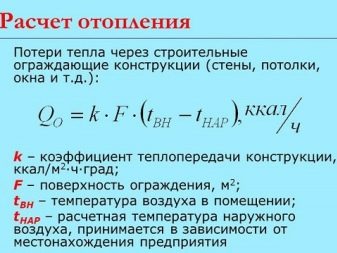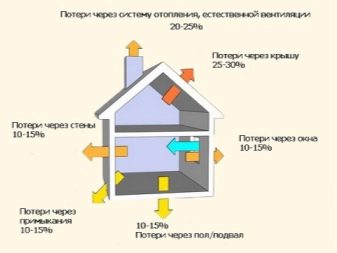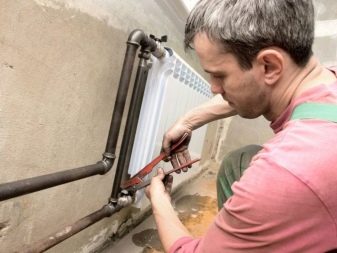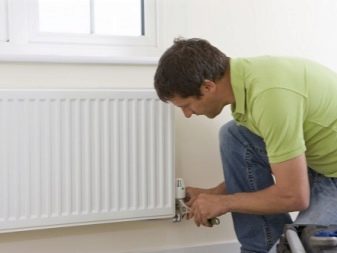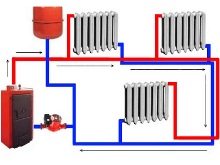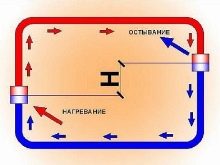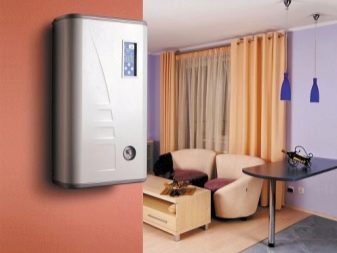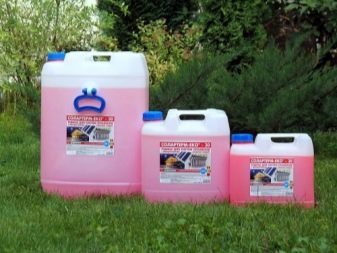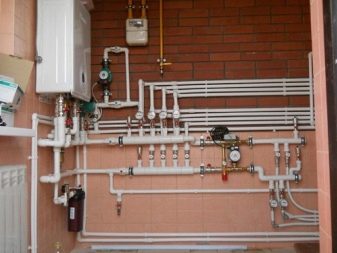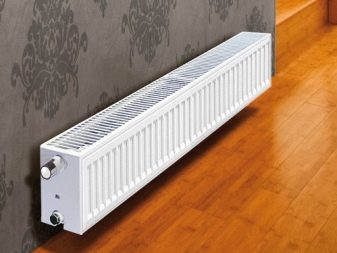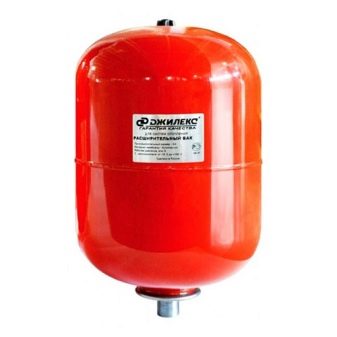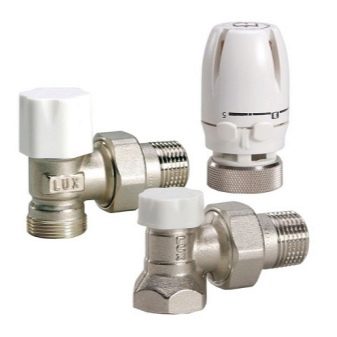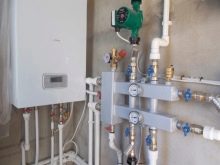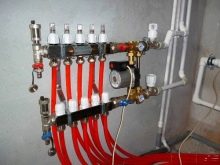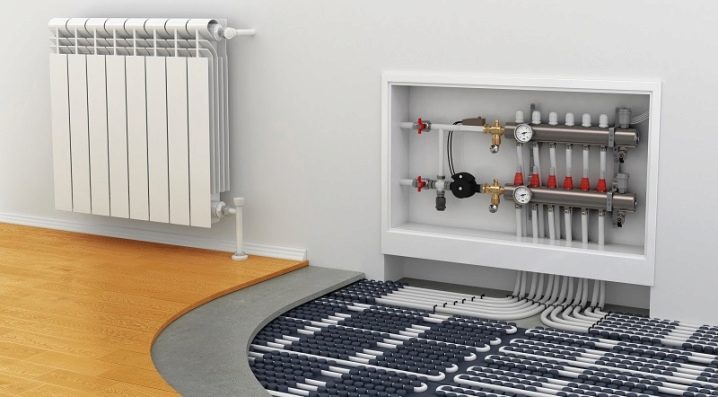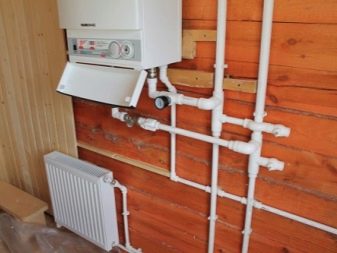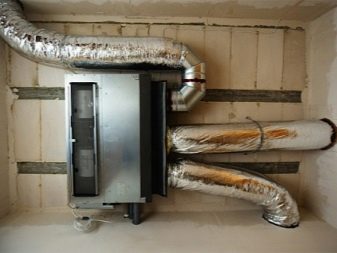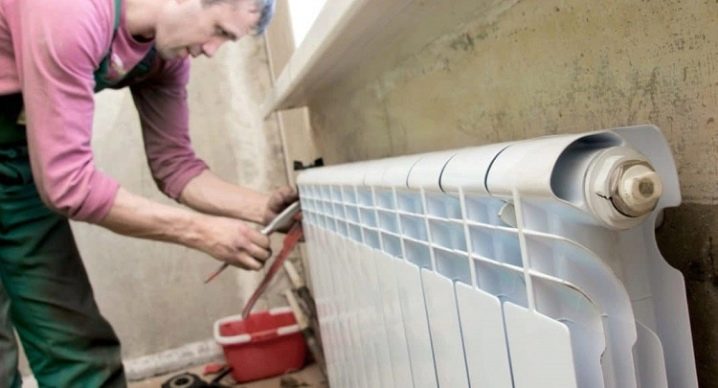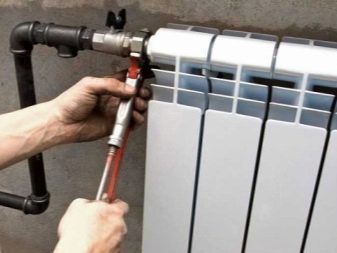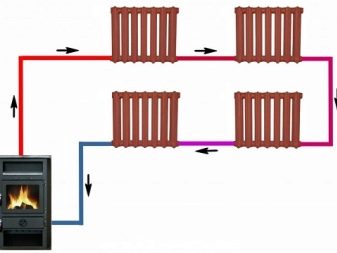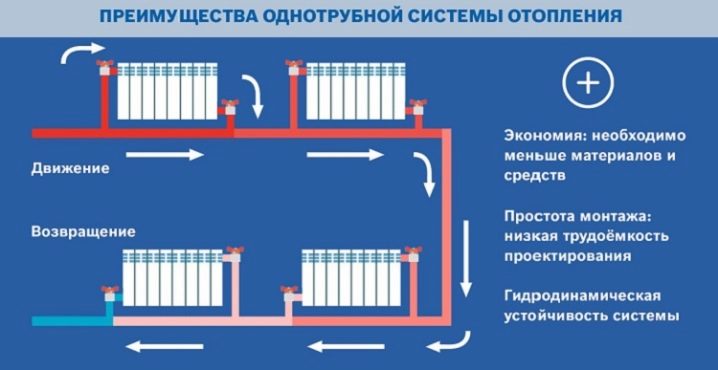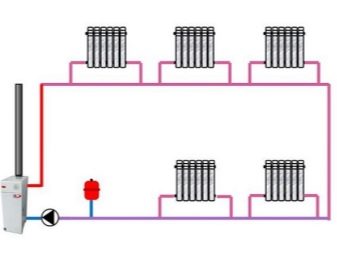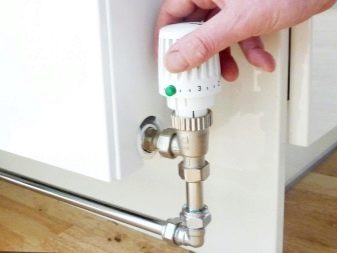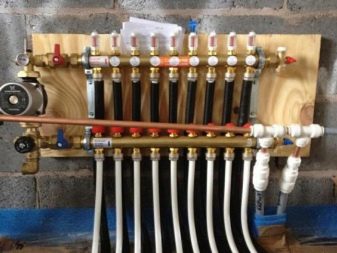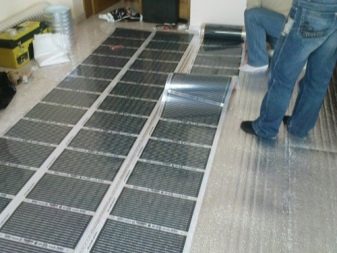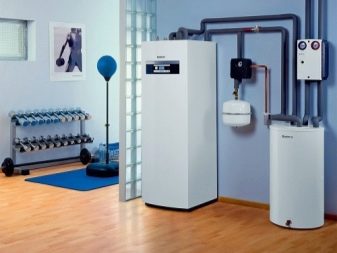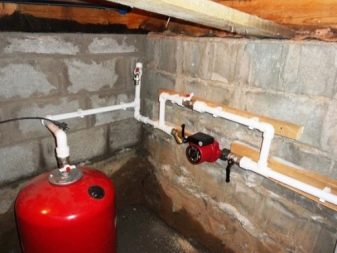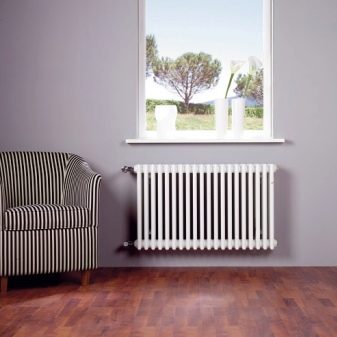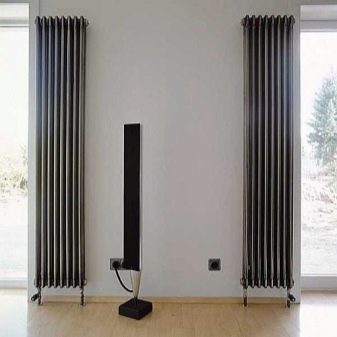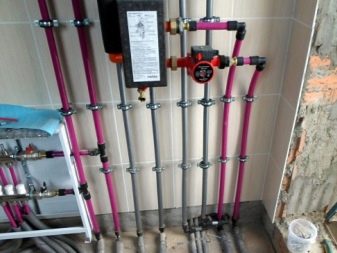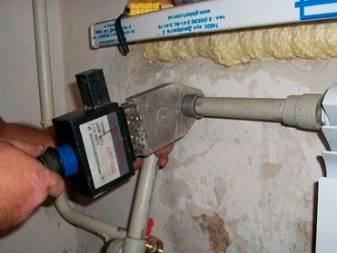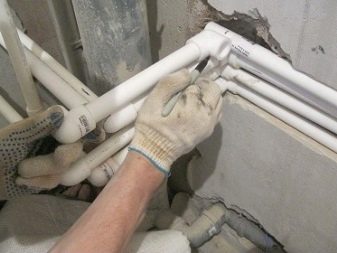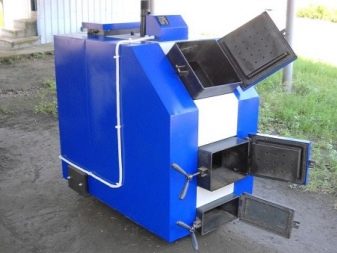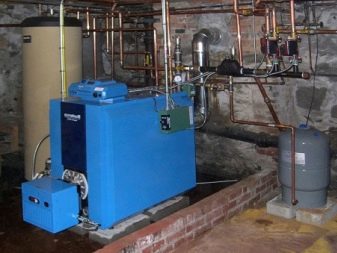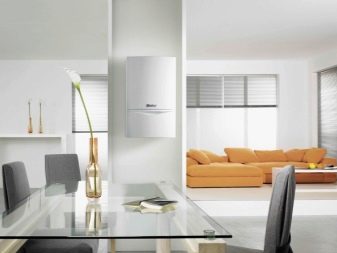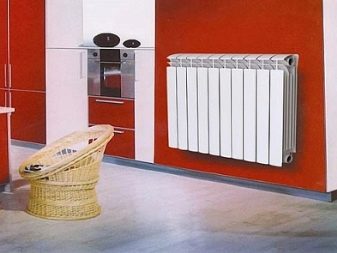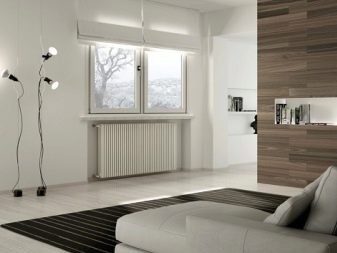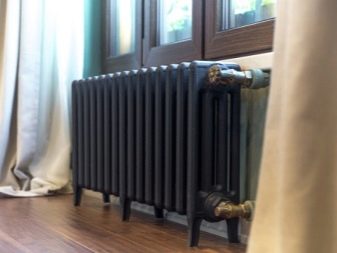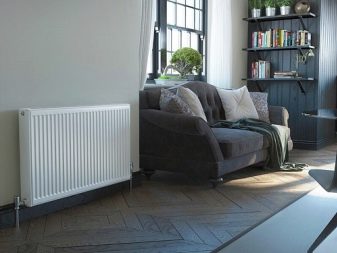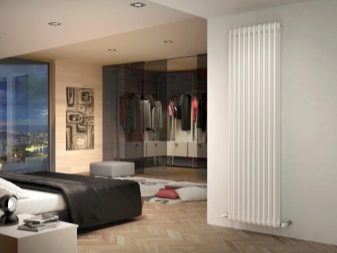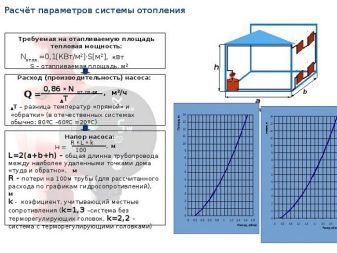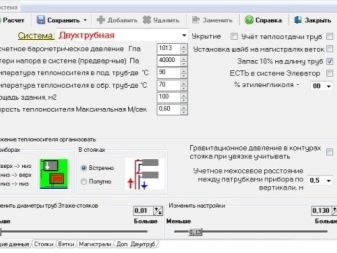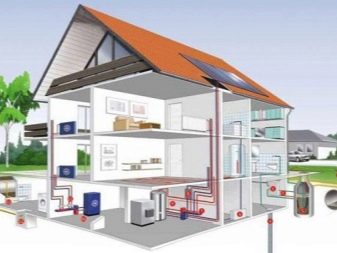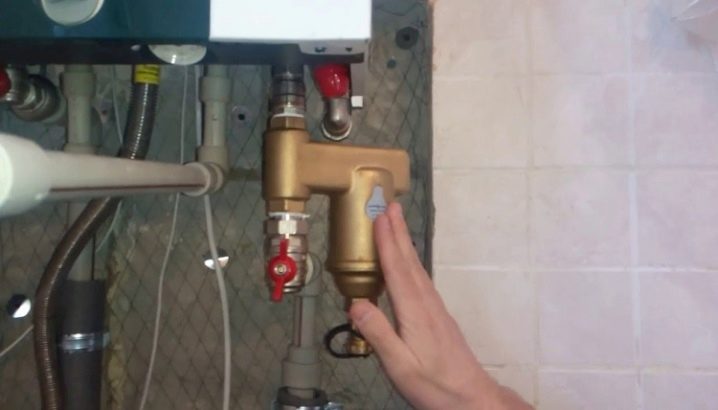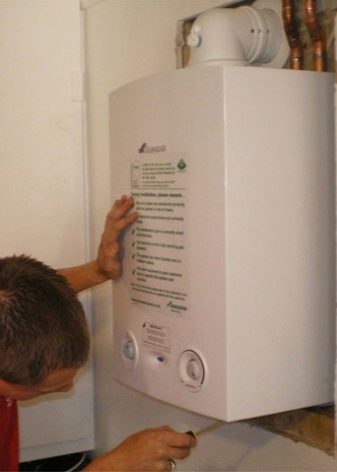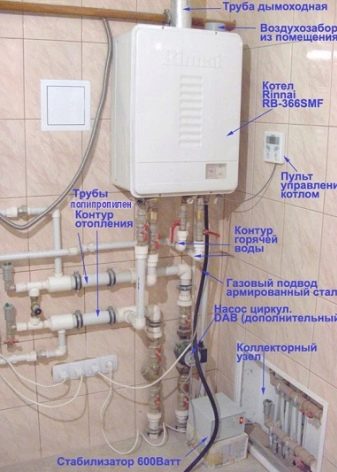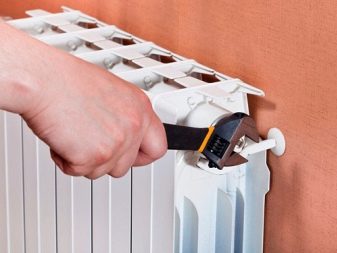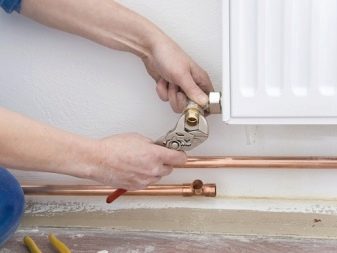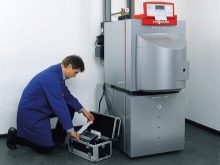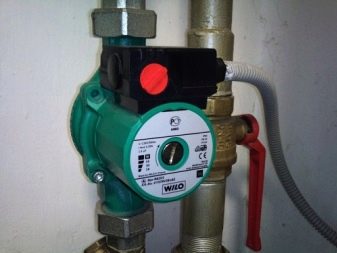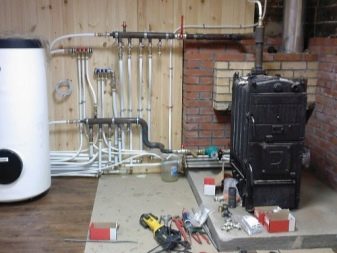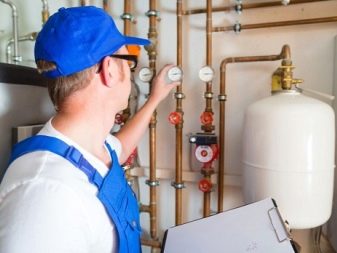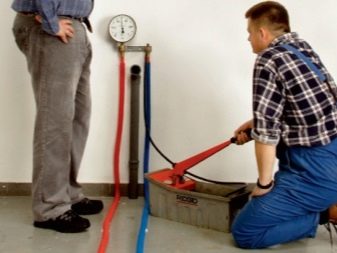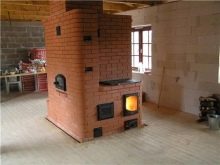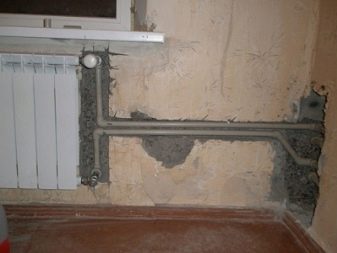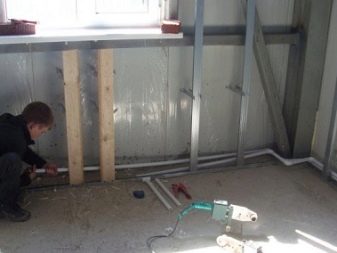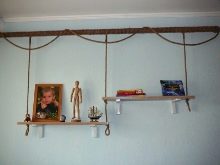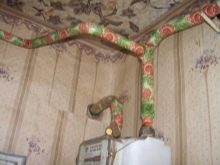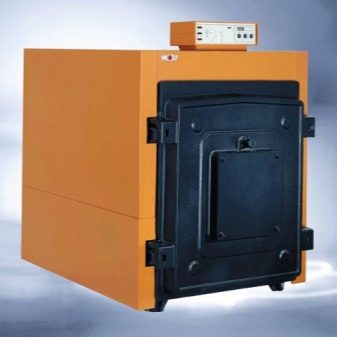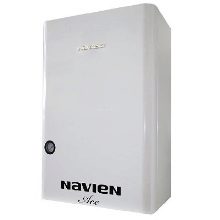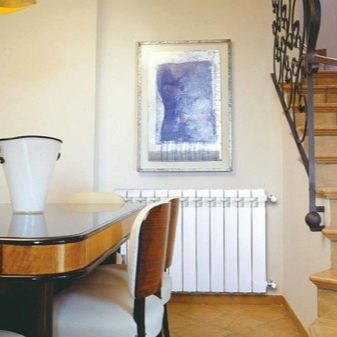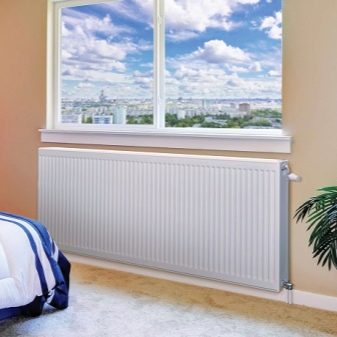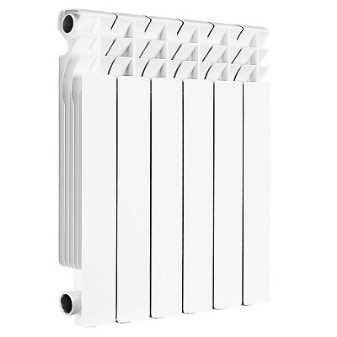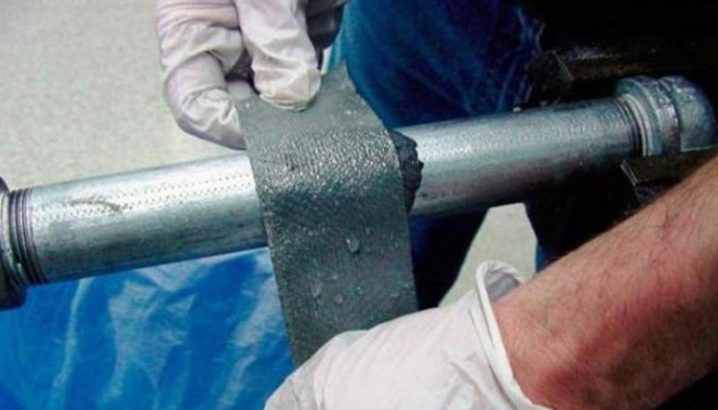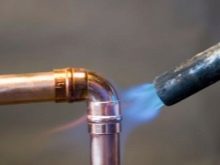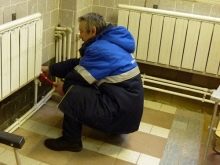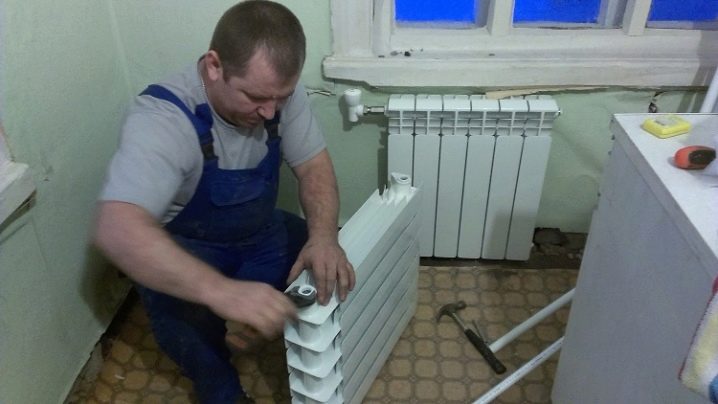Heating: types, principle of operation, calculation and installation
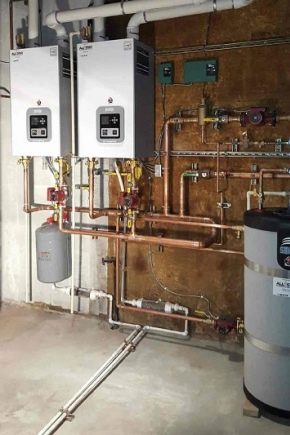
The issue of individual and independent heating in private buildings is extremely important. The process of organizing the heating system of a private house is a rather difficult and painstaking task. To do this, you can use the help of specialists and professionals, or cope on your own. But in this case it is necessary to study in detail all the subtleties and features of heating systems. From the correct installation of heating will depend on comfortable living in a private home.
Special features
Before carrying out work on the installation of circuits for heat supply, it is extremely important to take into account the individual characteristics of each house and a specific heating system.
The following steps should be followed:
- at the initial stages, it is necessary to clearly define the type of system that meets goals, desires and opportunities, and its choice may depend on many factors - the size of a private house, the length of heating and personal preferences;
- it is worthwhile to competently approach the choice of the main components of the heating system;
- one of the main stages is the correct calculation of heating; it is necessary to accurately measure all indicators;
- then it is necessary to develop a detailed scheme for the future heating of the house; its development is to create a detailed project, which should include the area of each individual room of a private house, the number of windows, tightness and other features;
- it is worth remembering that for the installation of heating equipment you need a certain set of permits;
- Further, work on the installation of heating is carried out - this is one of the most crucial and most difficult stages;
- it is important to carry out the first system start-up in test mode; Checks will help ensure proper installation and the absence of system faults.
It is extremely important to carry out the installation of the heating system strictly according to specified stages, since this rather difficult job requires high precision and laboriousness. That is why for these purposes use the help of professionals. But to understand the heating system and carry out its installation is quite realistic and independently.
When choosing a heating system, you should be guided by the following parameters:
- system security level;
- it is possible to install the system by your own efforts;
- how compact and simple the system is to regulate;
- the service life provided by the manufacturer;
- there is the possibility of unscheduled repair of heating and work on its prevention;
- You should pay attention to the roof structure of the roof and the tightness of windows in the room.
For the normal functioning of the heating stationary pipe support is extremely important. It allows you to absorb the internal pressure surges in the pipes, their pulsation, various vibrations, and the weight of the pipes themselves.And also among the features worth noting the type of coolant movement along the contour.
There are two varieties.
- Natural or gravitational. In such circuits, water or other coolant when heated goes up and gives off heat to the radiator. And after cooling, it re-enters the boiler to heat up again. This is a simple and affordable option. Natural coolants do not require the installation of special equipment and are extremely easy to operate. They are cheap and economical, as they do not spend energy in the course of their work. Such systems can work well with a length of about 30 meters.
- Artificial. This group includes pumping and forced variants. In artificial models, the coolant is circulated using a special pump. They are presented as extremely simple, that is, mechanical, and more complex - electronic. Electronic pumps are used in spacious rooms and do not require much effort when launching the system.
Their work is fully automated and depends only on electricity.
Varieties and device
It is necessary to consider what components the heating system in private houses consists of, and also to stop in more detail on each of them.
- Boiler - It is the central and regulating element for the supply of heat. These units are of different types and can work on different types of fuel. More information about the boilers, as they are, as well as some of the intricacies will be discussed in the next paragraph.
- Heat carrier - It is an important element for any heating system. Often ordinary water is used for this. But it can be antifreeze, and other non-freezing liquids. It is important to use it when the tenants in the house are periodically and room heating is not always necessary. For example, in winter, water requires the constant functioning of the heating system so that it does not freeze in the pipes. Otherwise it can lead to disastrous consequences. But antifreeze has the property not to freeze at low temperatures and is constantly in a viscous state. Speaking of viscosity, since antifreeze is not as liquid as the same water, it will require more power from the boiler and the circulating pump to disperse it through pipes. By selection of the coolant should be treated with attention.
If it is antifreeze, then it is important to pay attention to the composition, because some liquids can be extremely toxic.
- Pipeline. This element of the heating system carries out one of the main tasks - it is the entry of the heated coolant into the batteries and its constant circulation through the system. At installation of the pipeline different materials can be used.
- Battery - This is the next element of the heating system, which is also called a radiator. This device directly transfers heat from the heated coolant to the room in the house. By the way, not all heating systems have a radiator. There are innovative devices that do without them, but more on that later. In the standard heating system, there is a radiator and its connection to the pipes may differ.
- Expansion tank. This element is usually always present during the operation of the heating system in private buildings with two floors. This device can solve a number of problems. For example, a circulation pump will help to create too high a pressure in the pipeline, and as a result, the coolant boils up much more than the required temperature.Accordingly, this can lead to breakage of the entire heating system or partial failure of some of its elements. And the presence of an expansion tank will help to avoid such troubles. Tanks are divided into models of open and closed types.
- Fittings - this is quite an important element. Valves allow you to quickly disable a certain part of the system, if necessary. Basically, stop valves are needed for the maintenance or repair of the heating system. It is also worth highlighting the safety and control valves. The safety valve is a valve, an air evacuation system and a balancing valve.
Regulatory performs the function of leveling indicators in the heating system.
- Circulation pump. Such an element also plays a high role in the supply of heat to private homes. The special actualization of this device is noted in houses with a large area. Since it is natural to disperse the coolant through the pipes is quite difficult if the system has a long length. But thanks to the circulation pump, this problem disappears.This device accelerates the coolant through the pipes, ensuring uniform heat distribution throughout the house. When choosing a pump, it is advisable to turn to specialists who will help to make the necessary calculations, because when determining the head power and circulation, you need to proceed from the floor space of the house and other building features.
- Hydroarrow and distribution manifold. With the help of these devices, the losses in the system are reduced, the hydraulic circuits are separated, the increase in the coolant flow through the pipes is ensured and the level of uniform distribution of heat is increased. Distribution manifolds can be made of different materials. Mainly steel, copper, brass or polymeric collectors are used. Complex distribution models can also include sensors that monitor pressure and the temperature level in the system.
And also automatic devices for air release from the system can be added.
In general, it is necessary to distinguish three main types of heating.
- Water heating. This type of system seems to be one of the most popular for conducting heat into private buildings. In this case, hot water or some other coolant that is immune to low temperatures is used to supply heat to the house. Water circulation in this system can be done both naturally and can be achieved artificially (for this purpose, pumping stations and others are used).
- Electric heating - This is no less a popular option for supplying heat to private residential premises. This type of circuit has a high level of environmental friendliness, is extremely easy to operate and maintain. It should be noted that it is not always advisable to use this option for supplying heat to a large private house, since it will take a lot of electricity to heat large areas, which will be quite expensive. For buildings in which the tenants will live periodically - this is the ideal system. And also it is quite possible to use it as a backup heating, if the main heating system fails.
- Air heat supply option is relatively new among building heating systems.Its principle is to warm the air that enters the room through the pipes. Then the heated air gives them their heat. The downside of this method is the rather slow heating of the room.
The air system is considered far from the most popular option for heating private houses.
It is worth considering in more detail the specific schemes for heating private houses.
Usually there are the following types:
- horizontal one-pipe circuit;
- single-tube, located vertically;
- scheme called "Leningrad";
- two-pipe system in which there is a lower wiring;
- two-pipe system with top wiring;
- ray system with collectors;
- schemes in which there is a forced or natural circulation.
Single pipe system
This heating scheme is deservedly considered one of the most popular because of its simplicity. This option of heating a private house is quite economical in terms of the use of materials - one pipe is supplied with coolant in turn to each radiator. After reaching the last of the batteries, the coolant flows in the opposite direction.
In this scheme of heat supply, the following advantages should be highlighted:
- This scheme is extremely easy to use when installing;
- there is a rather high saving in materials;
- the use, operation and maintenance of such a method of heating does not cause difficulties.
Among the main drawbacks of the one-pipe heating scheme is the uneven distribution of heat. It lies in the fact that the further the battery is from the boiler, the colder it will be. But it is realistic to avoid such drawbacks with the help of special devices or additional pumps that accelerate water faster and better, thus ensuring its even distribution. The horizontal scheme of water heating of a private house is extremely simple. When installing this scheme, first mount the batteries, and then connect them with pipes.
In addition, it is worth noting the vertical heating system. This option is suitable for two-story buildings. In this scheme, the vertical pipe is displayed on the second floor, and then it is connected to the batteries.
Among its main positive aspects are the following:
- heat is evenly distributed on the first and second floor;
- simple installation and maintenance;
- saving on materials.
"Leningradka"
The system called "Leningrad" in principle is very similar to the one-pipe system, but with some improvements. In this case, the coolant does not change its temperature when it passes through the radiators. In this scheme, special jumpers under the batteries are used. Thanks to them, the coolant has the same temperature in all batteries. The main advantage of this scheme is the possibility of changing the temperature in each room separately.
As well as the distribution of heat over the entire area of the house occurs fairly evenly.
Two-pipe system
It is worth noting that the two-pipe system with the presence of the lower wiring is more complex. It is often used when heating high-rise buildings is necessary. And also such a system is actively used by the owners of private buildings. It is a complex of the supply pipe and the return pipe, and already between them is the battery. The distribution of the coolant is extremely even, which contributes to the creation of the optimum temperature throughout the structure.It is worth noting that here it is possible to disable individual radiators if necessary.
Sometimes the layout of the lower wiring is allowed even under the floor. For this reason, it is called the bottom, because it is less visible and allows you to disguise some parts of the system. The two-pipe scheme with the top wiring differs from the previous one only in that the expansion tank in this case is fixed in the upper part of the heat supply system. The rest of the principle of their work is similar.
Beam system with collectors
This scheme is considered, perhaps, the most modern and unusual. In this model, an individual highway is laid separately for all devices. The principle of this new generation of heating is concluded in heating the room with heat rays that are reflected from the floor or another surface and, accordingly, give off heat to the surrounding space. The installation of such schemes is typical for new buildings. The heating temperature is easy to adjust with the help of small switchboards.
The heat in these models is distributed very evenly. In general, the beam system receives high user ratings.But if there is a desire to install a radiation system, then it is worth considering the fact that it is much more difficult to mount it in an already fully made house.
Often, if after the house has been built, it is planned to use such a model of heat supply, then for this purpose a special layout is made, and the sewerage and installation are carried out during the construction process.
Infrared flooring is another modern option for supplying heat to a private home. These models have appeared relatively recently on sale, but have already managed to get a big distribution. Such systems are more economical and efficient when compared with standard heating options. The operation of the infrared floor is completely dependent on electricity. Therefore, with regard to electricity prices, this option is quite expensive. But these floors are very well heated air, so they create quite a comfortable temperature in the room. And it is also possible to adjust the required temperature to a comfortable level.
Heat pumps are an option that is not very popular, but the principle of operation of the system is quite interesting.In this case, the pump takes heat to heat the house from the environment. Such systems will be extremely economical, but it is worth saying that they are the most expensive systems of all the existing ones, and their installation is very complicated.
Many German companies are engaged in the production of these pumps and provide them with a very long warranty.
Circulation with forced and natural circulation
The natural scheme of circulation of the coolant is quite simple. Water or other heating medium is heated, for example, by means of a boiler. When the coolant is heated, it rises according to the laws of physics. And having risen to the extreme point, it gradually cools down and, accordingly, descends again into the boiler. This process is repeated cyclically.
But if such a system additionally uses a circulating pump, then this is already a forced circulation circuit. With the forced circulation of the coolant, the heating of a private house occurs much faster. The pump accelerates the coolant in a shorter period of time. This scheme can be used in large heating systems, while the natural one is limited in distance.The operation of such a pump will depend primarily on electricity.
Which one is better?
Given the above information about the various schemes and types of heating, it is necessary to determine the optimal and appropriate system. For example, for a small country house, which does not provide a permanent 24-hour accommodation, electric heating is quite suitable, because it can be used to the extent necessary. But for a completely residential cottage you need a more serious heating system. In such a house, it is advisable to use water heating. An important aspect is the cash costs of carrying out the installation of the system. Do not forget about the exact calculations for the creation of a future heating system.
It is necessary to take into account the volume of each room, the length of the system and the duration with which the country house will be heated.
And it is also necessary to determine the material from which the pipes will be installed in a private house.
It is worth noting the following materials from which the pipes are made for heating:
- steel;
- copper;
- stainless steel;
- polypropylene;
- polyethylene.
To date, it is not recommended to install pipes from ordinary "ferrous" metals. On such materials, there is a greater risk of corrosion, mold and rust. Steel is a very good material, which is less susceptible to these factors. And also steel pipes will serve a long time. Copper pipes or stainless steel pipes are distinguished by high cost, but also excellent quality. Such water pipes are extremely resistant to temperature extremes, have a long service life.
When brazing copper pipes, the soldering method is used, and for stainless steel - various fittings.
Polypropylene pipes are the cheapest. In its other qualities, such material is inferior to analogues. The fastening of such pipes is also carried out with the help of soldering. In the process of soldering, the material can be quite "capricious." If it overheats, then you can block the cross section, and if, on the contrary, the pipe can give a leak.
Pipes made of polyethylene or metal-plastic are higher in cost, but also much more reliable. In particular, metal-plastic pipes have several protective layers, which almost completely exclude the possibility of leakage. The occurrence of corrosion on such material is completely excluded.Pipes are lightweight, which is extremely convenient during installation or transportation.
Yes, and the joining of these types of pipes is much easier than the same steel products.
Of great importance for the entire heating system is the boiler. They can be of different types. Modern manufacturers offer several basic options for boilers. Each of them has both positive and negative sides.
It is worth considering all these models below.
- Boilers for solid fuels. In the group of such water heating systems, it is worth noting three types of boilers - these are direct combustion, pyrolysis and pellet. All these systems are united by one significant plus - they have a low cost, because solid fuels (wood, coal, and others) are notable for their cheapness. Therefore, solid fuel systems are quite popular. The downside of such heating units is the duration of their kindling. To ensure the normal operation of a solid fuel boiler, it is necessary to spend a lot of time and effort, which is a serious negative aspect, since you have to constantly maintain the combustion process with your own efforts.
- Boilers for liquid fuel. In such systems, diesel (diesel fuel) is used to provide heat carrier heating. The cost of these units is low, fairly acceptable level of efficiency, but there is one big disadvantage - it is working out. Cleaning the unit is extremely difficult and dirty because it accumulates a large amount of soot.
Moreover, diesel fuel costs are much higher than solid fuels.
- Gas boilers. Such systems are the most popular, because they operate from the gas main. These units are distinguished by high reliability, efficiency and ease of operation. And also many models of gas boilers are quite compact in size and will not take up much space. The boiler can be inspected only once a year.
- Electric boilers. Perhaps such systems are most effective for home heating. The efficiency of such electronic devices can be up to 99 percent. Compared to previous systems, a big plus is that electric boilers do not need ventilation. Such units have a low cost,and efforts to operate them are minimized. The system is fully automated and has the ability to make the necessary settings.
Of course, such a boiler will be completely dependent on the power grid, and the cost of electricity will be substantial.
And also it is worth considering the materials from which the radiators themselves are made.
The following types should be distinguished:
- aluminum;
- bimetallic;
- steel panel and tubular;
- cast iron.
Aluminum and bimetallic radiators, in principle, are similar in their performance. They have a high level of heat transfer and long service life. The difference between them is that aluminum radiators are made entirely of aluminum alloy, while bimetallic radiators have a frame made of steel inside. But usually bimetallic systems are used in high-rise residential buildings. Such a steel frame serves to withstand pressure, which is different in high-rise buildings. For a private house, aluminum radiators are suitable.
Radiators made of steel are also quite high-quality, although their heat transfer is less than that of aluminum ones. They are much more reliable and durable than their competitors. The operation of such pipes is very easy to control thanks to thermostatic valves. But in cast iron batteries, such valves, as a rule, do not. Cast iron heats up for a long time, but it can also keep warm for a long time.
Often such radiators are used for design purposes.
How to calculate?
The calculation of the basic parameters for the installation of the system is a rather delicate and laborious process that requires a lot of attention. Without correct calculations, it is impossible to select the necessary system, the capacity of which will be enough to heat the necessary space. There are two main ways in which you can take measurements. The first one is approximate, and the second one is more accurate.
The approximate method is much simpler than the second, and is as follows:
- it is necessary to measure the area of a single room, and multiply the result by 100 W;
- the same measurements should be taken in other areas of the house, and then all the indicators should be summed up;
- it is recommended when measuring in the corner rooms to multiply their area by 120 W;
- The results are affected by the number of windows in the room - if there are more, then it is desirable to increase the rate by which multiplication is carried out.
The second method is more accurate.With such accurate calculations, the area of the rooms, walls, windows and doors is measured. And also should take into account the thickness of the walls and floor. To determine the rate of heat loss should be taken into account ventilation power in the room. All measured indicators must be substituted in the following formula:
R (m² • ºС / W), where R is the thickness of the material in the walls.
Today, there are various online calculators that will help you make the necessary calculations. You can find them on the Internet at various sites on the topic of construction. For a one-story house to make calculations, and installation of heating devices will be easier than in a two-story building. For a two-storey private house it is necessary to draw up a detailed diagram with the image of each room. Often, in two-story houses, a combined heating system is used, combining radiators and installing underfloor heating.
We should also pay attention to the issue of pressure in the heating system. Operating pressure in the system - these are indicators at which the boiler can function normally. This pressure should not exceed the threshold - this is an indicator that can lead to dire consequences.The specific and exact value for all buildings can not be named. Various factors influence the rate of working pressure - the height of the building, the length of the pipeline, the number of batteries (radiators) and the type of system itself. Approximate values for a two-story house of average area range from 1.5 to 2 atmospheres, and for higher buildings this figure can reach 4 atmospheres. Accordingly, for a single-story private house, the working pressure will be about 1-1.5 atmospheres.
Subtleties of installation work
How to connect the boiler?
It is necessary to begin the installation work of the heating system from its main part - the installation of the boiler. There are certain rules according to which boilers up to 60 W can be installed in the kitchen. Higher capacity units must be installed in boiler rooms. And also it is worth taking care of assigning high-quality ventilation for the heater. The boiler should be installed at a certain distance from the walls. Often instructions are attached to the instrument with permissible distances.
For each unit, they can be individualized, but it is possible to distinguish such average indicators as:
- the passage in front of the boiler should not be less than 1 meter;
- any equipment must also be located at a distance from the boiler, which is about a meter;
- if the unit requires maintenance from the rear, it is worth leaving a distance of about 1.5 m;
Most gas boilers are mounted and fixed on the wall with special fixings. Installation of a system with forced circulation implies installation of a pump near the boiler.
It was noted among users that it is worthwhile to choose a pump with a low noise level, otherwise a humming sound in the process of pump operation rather strongly interferes.
How to connect the radiator?
Among the main schemes for connecting radiators to the main line, the following should be noted:
- lateral unilateral connection of the radiator is carried out when it is necessary to connect the pipe to the riser;
- with a diagonal connection, one pipe is connected to the radiator from above on one side, and the other from below on the other, which is done to effectively use the entire surface of the radiator and contributes to its uniform heating;
- the lower connection is provided in some versions of radiators; partly such a modelreminds lateral unilateral connection.
How to install radiant heating systems?
At the initial stage, it is worth noting clearly where the distribution cabinets will be located that regulate the operation of the system, as well as to identify niches for laying pipes. Roughly speaking, you need to make a diagram indicating the route of the pipeline. If the radiant heating system will be laid on the floor, then it is necessary to provide the necessary distance between the “draft” and “clean” floor. Pipes of the system are placed on the insulation, and then proceed to the installation of "finishing" floor. For this, the surface together with the pipes is poured with a layer of mortar and leveled.
Although the installation of this system is complicated and requires a lot of time and effort, but radiant heating is very efficient and modern.
What mistakes often occur during the installation of the heating system?
One of the most common and common mistakes is the incorrect correspondence of the power of the boiler and the area of the house. The boiler should be selected after all calculations. And in accordance with them is to pick up the unit. And also it is necessary to take into account such aspect as the heating of water for personal needs.Even if the boiler copes with heating, its capacity may still not be enough to heat the water.
In no case do not forget about safety. It is especially necessary to pay attention to gas boilers, because gas is an explosive substance. The boiler must be accompanied by all relevant documentation confirming its safety. When a boiler attenuation occurs, gas can start to flow into the room, therefore many models are equipped with automatic gas shut-off systems when an emergency situation occurs.
In addition, even if such a system on the boiler is not provided, it is possible to independently purchase an inexpensive sensor.
An equally common mistake is choosing an unsuitable pump. It should be taken responsibly, because this equipment will work without interruption, and therefore it is important to choose a reliable and appropriate pump. Of course, you should take into account the height of the house, as well as the area of all rooms. You should not save on such equipment. It is important to pay attention to the details. In the pump, they must be made of high quality materials that have the possibility of long-term operation.Otherwise, there will be constant interruptions in heating and serious damage may occur.
And another common mistake is the wrong location of the boiler and other equipment. This aspect significantly affects the quality of work of the heating equipment. With proper keeping distances can be carried out in the subsequent replacement or repair of parts. How to install the boiler correctly, observing the necessary distances, was described above.
How to properly test the heating system?
For further use of the heating system, it is extremely necessary to conduct its first hydraulic and thermal tests. To assist in conducting preliminary test launches there is even a special document - GOST 25136-82.
Testing of the heating system should be carried out for such purposes as:
- first of all, a test run is necessary to minimize further damage to the heating elements;
- to verify compliance with the power system and the parameters of a private house.
In accordance with the documentation, first carry out hydraulic tests of heating, and after it there is a heat check of the system.In some cases, there is a pneumatic heating check. It is worth considering these steps in more detail.
- Hydraulic test. In this case, the system is checked by filling it with coolant, which helps in the initial stages to check the quality of the tightness of the heating - to ensure that there are no leaks and the reliability of all connections. The boiler at this stage does not need to run.
When conducting this type of verification, you must comply with the following conditions:
- the test should be carried out at a temperature not lower than +5 degrees;
- During the testing period, the system should not close the pipes with various shields and other decorative devices, since to check it is necessary to visually check the pipes for leaks;
- the pump connection should be in the lower part of the circuit;
- It is advisable to carry out this type of test several months before the start of the heating season.
- Pneumatic test. Its essence is similar to hydraulic. If it is not possible to carry out the first type of inspection, then you can use the pneumatic type. In this case, the system is checked by applying high pressure to it.For this there are special devices that show the level of pressure in the pipes. If the readings are unstable and constantly changing, then it means that there is damage in the system and it should be checked visually. This type of test is not recommended for polymer pipes, since high pressure feed can damage them.
Usually pneumatic tests are carried out in multi-storey residential buildings.
- Heat test - This is the final stage of testing the performance of heating. In this case, the system is filled with coolant and the boiler is started, which heats it. It is worth waiting for the coolant to warm up and accelerate it through all radiators of a private house. If the heat level begins to increase and coincides with the parameters set for heating, then the system works normally and it can be put into operation. In some cases, when conducting thermal tests, a device such as a thermal imager is used - a device that is specifically designed to monitor the uniform distribution of heat. Through it you can see which parts of the batteries are heated less than the others, which is very convenient, but this device is very expensive.
Using these types of checks, you can fully ensure the integrity of the heating system of a private house and begin to use it boldly.
Tips and tricks
In addition to the main sources of heating of a private house, it is worth noting others that are rather unusual and not widely spread. For example, alternative solar heating. In many countries, solar panels are used for private sector heating and manufacturing. But it should be noted that in our latitudes to use such a variant of energy as a heating device is not entirely advisable. In winter, in extreme cold, batteries require a lot of energy, which they will not be able to receive because of rare sunny days. Yes, and there is such a system quite a decent amount.
It is worth noting instruments that work on the force of the wind. Such installations also have a high cost. In addition, these units require a large area for their placement. Another big distribution gets stove heating, which was used earlier. Basically, various fireplaces and stoves are used as a decorative element and are unlikely to be able to heat a large area house.This can handle a fairly massive furnace, which require a large area during installation, as well as constant effort to ensure their normal operation.
Recently, hidden pipes have acquired great fashion. It is not always pleasant to look at open pipes, which rarely have an aesthetic appearance, therefore There are several options for their disguise.
- Masking pipes in the walls. This method will require effort. Here it is necessary to provide special recesses in the walls before installing the heating system. After the system is installed, all the checks have been carried out and the system is ready for use, you can close the niches with pipes with the selected material.
- Creating a frame along the pipes is a simpler method, which involves the installation of a special steel frame on which the selected material is mounted. For this often used drywall.
This option is quite simple and does not require much effort.
In the presence of designer imagination, you can simply decorate the pipes, giving them an original appearance. For this you can use even available tools. Examples of the design of heating pipes can be seen in the photo below.
Choosing a boiler, you should give preference to those manufacturers that have long established themselves in the market., and whose products have the highest quality. Among the major brands of boilers, German models have undoubted quality, in particular - Wolf and Vaillant. Basically, these companies are engaged in the production of mounted gas boilers. These devices are compact, convenient and clear to manage. And also users marked a long warranty period of the units. The efficiency of German models is quite high. With the help of these boilers you can heat private houses of a large area.
German boilers have a pleasant appearance, and their environmental friendliness is at the highest level.
Viessmann boilers are also included in the ranking of the best units for heating a private house. They are compact, but at the same time have high efficiency (98%). Users note that the boiler consumes a small amount of electricity, which is a big plus. Installation of this unit is quick and does not cause problems. A low noise level was also observed during the operation of the boiler.
A good choice are the boilers of Italian and Korean production. These are mainly Baxi and Navien brands.Italian boilers are more bulky, but no less reliable than the German ones. Korean boilers are also very functional, combining a good price and good quality.
These boilers are compact and beautiful in appearance.
If we consider the well-known brand of batteries, it is worth highlighting several of the most popular.
- Global. Products of this manufacturer are of excellent quality. Global has established itself as the main brand of radiators since the 70s of the last century. For the most part, the production of the company is focused on aluminum batteries, which are additionally reinforced with special components that exclude the possibility of leakage. This brand is presented by a wide choice of various models and color variations. These radiators are supplied to most countries of the world.
- Oasis - This is a Chinese company that produces absolutely any model of radiators. Among the products of this brand can pick up and aluminum, and bimetallic, and cast iron batteries.
Nevertheless, not all reviews about this brand are positive.
- Radena - This is an Italian company whose radiators receive high marks and reviews among customers. The company specializes in the production of aluminum and bimetallic batteries for heating.
- Elsotherm - This is a well-known domestic manufacturer. This company has been producing radiators since the late 90s of the last century. Basically, the choice is represented by aluminum and bimetallic models with good quality.
Their production technologies are constantly being improved and improved.
Many are interested in the question of what to do if there was a damage to the heating pipe. No heating system is insured against unexpected breakdowns. In case of unexpected leakage in the pipes, it is possible to quickly and independently cope with the damage.
If there is a leakage in a metal pipe, then you should use in such a way as:
- first you need to block the leak;
- for temporary repair, a clamp or layer of gauze soaked in salt can be applied to the damaged area, but this is a temporary measure, so in any case, the damaged area must be replaced;
- water is completely drained from this section, then the pipe is dismantled;
- in metal pipes, replacement is carried out by soldering;
- after replacement, you need to run the system in test mode and carefully observe the replaced area;
- it will be much more difficult to replace the cast iron pipes, so it is better to seek the help of specialists.
So, self-installation of the heating system of a private house is the key to a comfortable stay in it. It is one of the most responsible and painstaking stages of construction. If the installation of the system will be carried out by a professional, then you still need to understand this, know the main components of the heating system and the principle of their work. This information will help to understand how to correctly calculate and select a suitable heating system that will serve effectively for a long time.
How to organize a two-pipe heating system in the house, see the video below.

